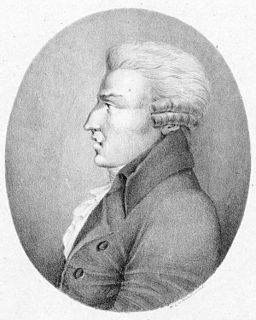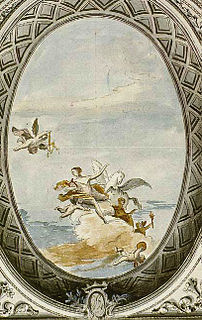
Francesco Durante was a Neapolitan composer.

Giovanni Bononcini was an Italian Baroque composer, cellist, singer and teacher, one of a family of string players and composers.

"’O sole mio" is a globally known Neapolitan song written in 1898. Its lyrics were written by Giovanni Capurro and the music was composed by Eduardo di Capua and Alfredo Mazzucchi (1878–1972). There are other versions of "’O sole mio" but it is usually sung in the original Neapolitan language. ’O sole mio is the Neapolitan equivalent of standard Italian Il mio sole and translates literally as "my sunshine".
Francesco Provenzale was an Italian Baroque composer and teacher. Notably Provenzale was the teacher of famed castrato 'il cavaliere Nicolo Grimaldi '.
The ballo was an Italian dance form during the fifteenth century, most noted for its frequent changes of tempo and meter. The name ballo has its origin in Latin ballō, ballāre, meaning "to dance", which in turn comes from the Greek "βαλλίζω" (ballizō), "to dance, to jump about". In Greece there is the Greek dance named Ballos.
The year 1603 in music involved some significant events.
The Naples Conservatory of Music is a music school located in Naples, Italy. It is situated in the complex of San Pietro a Majella.
Domenico Natale Sarro, also Sarri was an Italian composer.

The Teatro San Moisè was a theatre and opera house in Venice, active from 1620 to 1818. It was in a prominent location near the Palazzo Giustinian and the church of San Moisè at the entrance to the Grand Canal.

Antonio Valente was an Italian Renaissance organist and composer. He was blind from childhood and served as organist of Sant'Angelo a Nilo in Naples in 1565–80. During that time he published two collections of keyboard instruments music: Intavolatura de cimbalo and Versi spirituali. Nothing else is known about his life. In 1601 he was listed among the deceased organists of Naples.
Rocco Rodio was an Italian Renaissance composer and theorist, best known for his sacred works and keyboard ricercares.
Antonio Nola (1642-?) was a Neapolitan composer of whom little biographical information or music survives. He is to be distinguished from the better known Giovanni Domenico da Nola born 130 years earlier (?-1592).
Scipione Lacorcia was a Neapolitan composer of madrigals.

The Chapel Royal of Naples was the sacred musical establishment of the Spanish court in Naples which began with the Aragonese Court of Naples, and continued under the Habsburgs the Bourbons, and Joseph Napoleon.
Andrea Salvadori was an Italian poet and librettist. He was born in Florence and educated at the Collegio Romano in Rome. From 1616 until his death in Florence at the age of 43, he was the principal court poet to the Medici family. In addition to numerous theatrical entertainments and poems, he wrote the libretti for five operas, four of which have survived, although only La Flora composed by Marco da Gagliano and Jacopo Peri has an extant score. He was married twice, first to Emilia Rigogli by whom he had three sons and then to the painter Alessandra Furini. A collection of Salvadori's principal works curated by his son Francesco was published in 1668.

Luca Antonio Predieri was an Italian composer and violinist. A member of a prominent family of musicians, Predieri was born in Bologna and was active there from 1704. In 1737 he moved to Vienna, eventually becoming Kapellmeister to the imperial Habsburg court in 1741, a post he held for ten years. In 1765 he returned to his native city where he died two years later at the age of 78. A prolific opera composer, he was also known for his sacred music and oratorios. Although his operas were largely forgotten by the end of his own lifetime and most of their scores lost, individual arias as well some of his sacred music are still performed and recorded.







